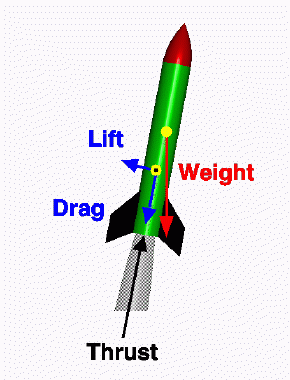David L. Akin is the Director, SpaceSystems Laboratory at the University of Maryland. He is also the author of “Akin’s Laws of Spacecraft Design.” He lists more than 40 laws: I selected ten when I blogged about “Applying Akin’s Laws of Spacecraft Design To Startups” here are six more that I thought were directly applicable to software entrepreneurship, but the whole list is very funny and worth reading.
Six More from Akin’s Laws of Spacecraft Design
11. Sometimes, the fastest way to get to the end is to throw everything out and start over.
Obviously without forgetting everything you have learned. One of the values of a scale model prototype is that it creates a safe to fail probe of one or more key uncertainties about your design.
17. The fact that an analysis appears in print has no relationship to the likelihood of its being correct.
 Most startup advice that’s not based on direct experience or observation falls in the category output from the Bullshit Industrial Complex. Read at your own risk.
Most startup advice that’s not based on direct experience or observation falls in the category output from the Bullshit Industrial Complex. Read at your own risk.
“The bullshit industrial complex is a pyramid of groups that goes something like this:
- Group 1: People actually shipping ideas, launching businesses, doing creative work, taking risks and sharing first-hand learnings.
- Group 2: People writing about group 1 in clear, concise, accessible language.
- [And here rests the line of bullshit demarcation…]
- Group 3: People aggregating the learnings of group 2, passing it off as first-hand wisdom.
- Group 4: People aggregating the learnings of group 3, believing they are as worthy of praise as the people in group 1.
- Groups 5+: And downward….
The Complex eventually becomes a full fledged self-sufficient ecosystem when people in group 4 are reviewing books by people in group 3 who are only tweeting people in group 2 who are appearing on the podcasts started by people in group 3.”
Sean Blanda (@SeanBlanda) in “The Creative World’s Bullshit Industrial Complex“
18. Past experience is excellent for providing a reality check. Too much reality can doom an otherwise worthwhile design, though.
The risk of expertise is that it makes you less willing to try something “that’s been done before and didn’t work” and give it a new twist that can make all of the difference. Sometimes constraints only exist in our mind or the way that we have inadvertently framed the problem or design goals.
27. (Varsi’s Law) Schedules only move in one direction.
Negative slack accumulates and dates in calendar are closer than they appear. You have to have a clear understanding of what the minimum requirements are your product needs to satisfy and be willing to postpone other nice to have features to get in front of customers before they time out.
34. (Roosevelt’s Law of Task Planning) Do what you can, where you are, with what you have.


I agree. When people ask me where to get started I tell them to
- Start where you are and sell what you have.
- Meet people, help them connect, and explore possibilities.
- Knit your network now before you need it.
- Try several things at once: two to four. This will help you stay unstuck without getting spread too thin.
- Focus when you feel traction–the ability to reliably set and hit goals.
40. (McBryan’s Law) You can’t make it better until you make it work.
The challenge with a new product is to determine whether it’s feasible for you to make it, desirable to at least an identifiable market niche, and profitable enough at the price customers are willing to pay. There are many hypothetical products that are highly desirable that cannot be developed, or sold at the price prospects are willing to pay. The normal sequence of feature evolution is
- feasibility
- basic functionality
- reliability
- performance
- ease of use
Be careful of premature optimization: there is a world of difference between prospect feedback based on a demo or datasheet and customer feedback based on production use.
Related Blog Posts
- Start Where You Are
- MVP What’s Really Under Your Control
- Applying Akin’s Laws of Spacecraft Design To Startups
- Three Advantages of Younger Entrepreneurs in B2B Startups
- Three Advantages of Older Entrepreneurs in B2B Startups
Image Credit: “Forces on a Model Rocket in Flight” by Tom Benson at NASA Glenn Research Center
